Since his partial retirement in 2018, Patrick has developed a deep interest in poetry related to geology. Examples of his work in the Edinburgh Science Festival 2020 can be found on the festival's website under the title "The Science of Poetry: Prof Patrick Corbett". He has also written articles on geopoetry and geopoetics for the Edinburgh Geologist and the Geoscientist. He chaired the Geopoetry 2020 online meeting on 1st October 2020. The nearly nine hours of Geopoetry and Geopoetics can be viewed here.
Patrick led a small editorial team to produce "Earth Lines: Geopoetry and Geopoetics", published by the Edinburgh Geological Society on 1st October 2021. There is a website ( https://www.edinburghgeolsoc.org/earth-lines/) where more details concerning the volume can be found, including readings of poems and details of how to purchase the book.
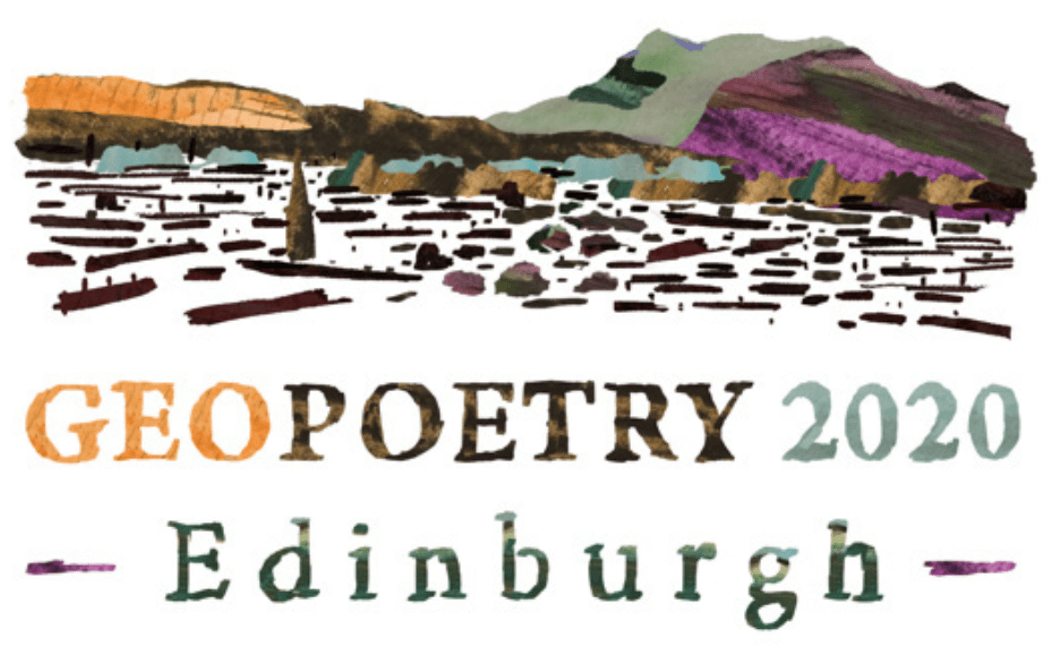
Original artwork by Patrick’s son – Hugo
Geology has long been an inspiration for poets - for example, Keats wrote his "Sonnet to Ailsa Craig" upon seeing that dramatic volcanic rock off the Ayrshire coast. However, the terms "geopoetry" and "geopoetics" are more recent, and are not well known or understood. So in summer 2019, I decided to look into the origin of these terms: below is a summary of an article I wrote in the spring 2020 edition of The Edinburgh Geologist (a twice-yearly magazine for everyone with a broad interest in geology) about what I discovered:

Ailsa Craig (PC)
The father of Geopoetics is the Scottish polymath Kenneth White. Born on the west coast of Scotland, White was strongly influenced by the geology of the Old Red Sandstone shorelines.
Having developed his thoughts on geology and poetry during the 1960s through 1980s, White founded the International Institute of Geopoetics in 1989. That institute also takes inspiration from earlier geopoets, making reference to the "geopoetic peregrinations" of Alexander van Humboldt in his travels in South America in 1799.
White remained deeply attached to walking, and in his long poem "Walking the Coast" (2003), he inspires others to walk the "White" Path with him.
You can read the full article here (see page 17), as well as a supplementary note here.
Tony McManus, following White’s path, founded the Scottish Centre for Geopoetics in 1995. The Centre is a network of individuals who share a common interest in developing an understanding of geopoetics and applying it creatively in their lives. Patrick is a member.
The Centre organises talks, discussions, day and weekend events, conferences and courses, including field work in interesting places, which are designed to extend members' knowledge and experience of geopoetics, including Geopoetry 2020.
It has members in England, Wales, Ireland, USA, France, Poland, Sweden and Australia as well as throughout Scotland. They welcome new members from all over the world. Membership application forms can be accessed from their membership page.
unless the beds are overturned
to make any geological sense,
from lowest strata to top bed
stratigraphy really has to be read
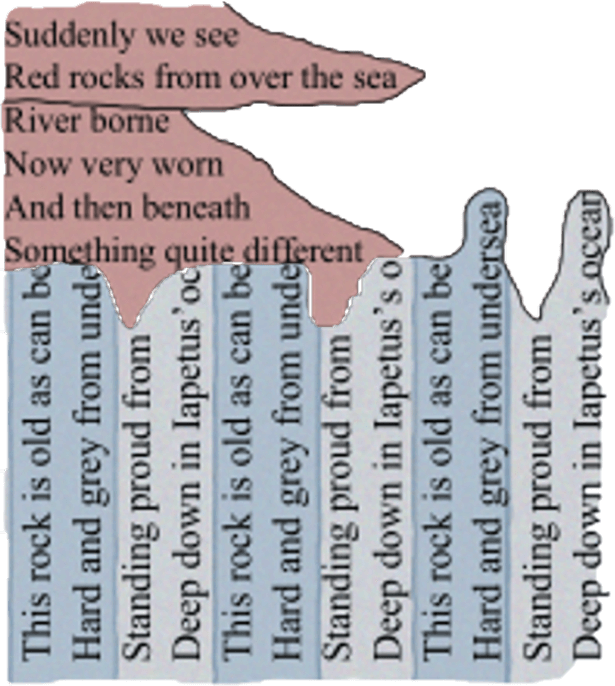
Siccar Point is the world-famous geological site, rightly regarded as the "Birthplace of Modern Geology", where James Hutton, the "Father of Geology" first made the insight that geological timescales are unfathomably longer than human ones.
When Hutton took John Playfair to visit the site, and explained the significance of what they were seeing, Playfair later recalled that “The mind seemed to grow giddy by looking so far into the abyss of time”.
You can visit Siccar Point yourself and see the spectacular junction between the two types of rock of vastly different age, just as Hutton himself did. Edinburgh Geological Society provides good background information, a guide to access and maps can be found here.
My Siccar Point poem tries to capture the moment when one sees the outcrop and tries to grasp the contradictions between the two types of rock. I have placed the appropriate lines within a sketch of the outcrop inspired by the original 18th Century imagining. The way to read this is in stratigraphic order and rotating the page at Hutton’s Unconformity to capture the upheaval and erosion over an unknown period of time between the two formations of Silurian deep marine and Devonian land deposits. The darkness may represent the large vestige of time lost in the sedimentary record (as much as 50Myr) during this hiatus. (This poem was originally published in The Edinburgh Geologist, issue 66.)”
An earlier artistic impression of the site, below, was made by Sir James Hall (1788) and this served as inspiration for my version. (Thanks to Grant Ross for drafting both of these for me!).
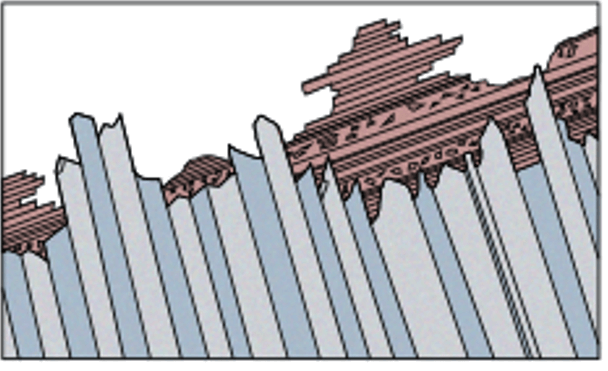
Hall's Siccar Point redrawn by Grant Ross
To whet your appetite ahead of your own pilgramage to Siccar Point, or if you are unable to visit it yourself, here is a photo of the outcrop:
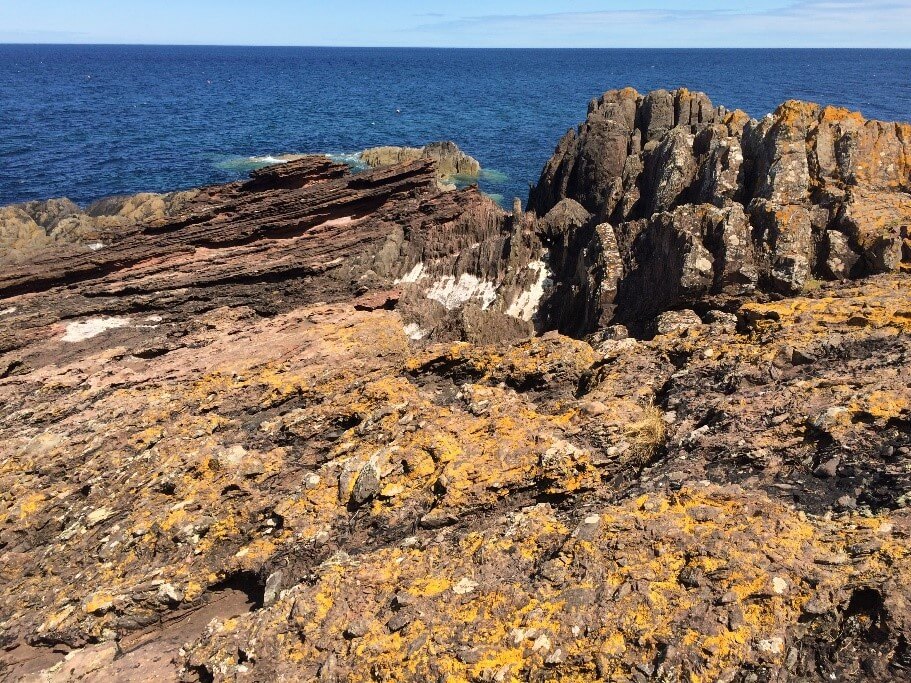
Siccar Point Geology
On my Coastal Walking Poetry page, I write about wild swimming. But Purbeck is not the only place one can engage in that activity - Siccar Point is also a great place to engage in some wild swimming!
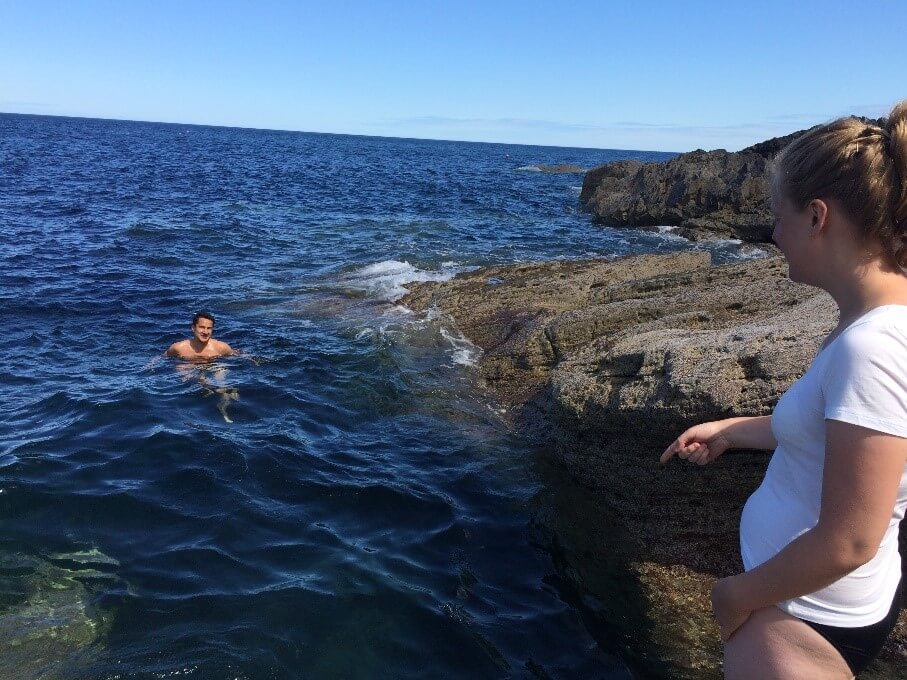
Swimming at Siccar Point